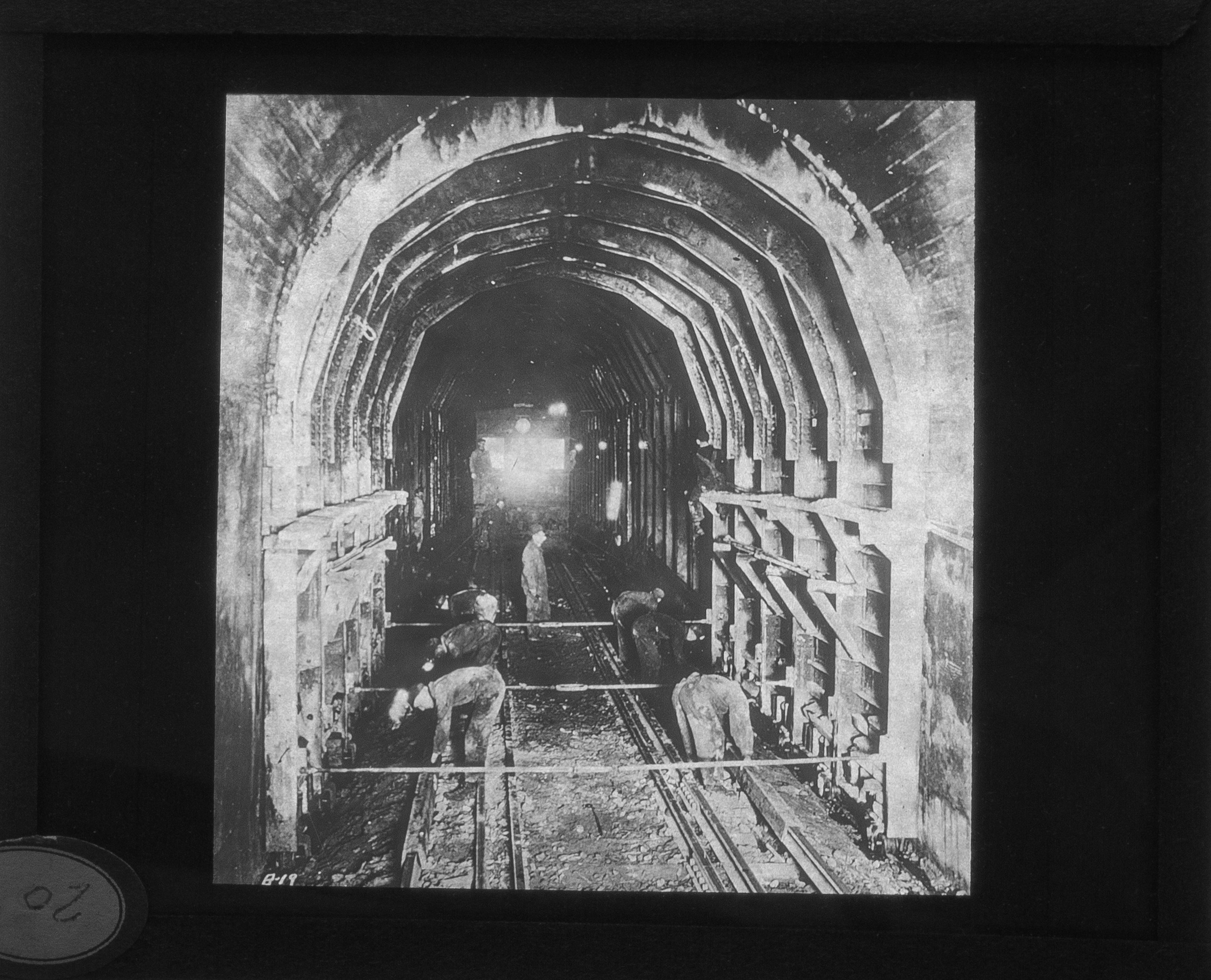
Today’s blogger is Kevin Ehrman-Solberg, a senior history major at Augsburg and an intern with the Historyapolis Project.
This haunting image shows a terrain few Minneapolitans ever see. It’s a view of the Minnehaha sewer tunnel in South Minneapolis–part of the vast subterranean complex constructed between the 1880s and the 1930s. This glimpse of the world under the city comes to us through a glass plate negative that we found in the municipal archives, one of many treasures from this forgotten repository in City Hall.
This image was created in the 1920s by the city’s Public Works department to document the largest infrastructure project it had ever undertaken. The Minnehaha sewer tunnel–designed to serve the rapidly growing population of South Minneapolis– ran from Minnehaha Parkway to East 52nd street before veering west and exiting into the river.
This project was greeted with excitement. More than 500 residents –many of them members of the Minnehaha-Nokomis Improvement Association –gathered on an April day to mark the beginning of construction by listening to the Longfellow community orchestra and the Minnehaha school glee club.
This huge tunnel was incredibly expensive to construct, estimated to have cost more than 5 million dollars by chief city sewer engineer Carl Illstrup. The project employed over 200 workers, who used air drills and explosives to hollow out the massive 9 by 13 foot tunnel. The train seen in this photo was used to remove the huge volume of sand, rock, and gravel excavated by workers who dug an average of 12 to 14 feet of tunnel a day.
This work was quite dangerous. Alex Peterson, the “blasting boss” for the Minnehaha tunnel, was seriously injured in a cave-in on August 5th, 1922. That same year, a sewer worker named Fred Gardner died in a different collapse in the Garfield Street tunnel in Northeast Minneapolis.
Today, the Minnehaha tunnel still exists, although it has been converted to a storm drain and no longer deposits raw sewage into the Mississippi.
Material for this post is from “Party Celebrates Start on Sewer,” Minneapolis Morning Tribune, April 23, 1921; “15.5 Miles of New Sewers Constructed by City during 1921,” Minneapolis Morning Tribune, December 27, 1921; “Sewer Tunnel Mile Long Being Dug,” Minneapolis Sunday Tribune, August 28, 1921; “Sewer Scrapbook” located in the Minneapolis City Archives. Glass plate negative from the Minneapolis City Archives.